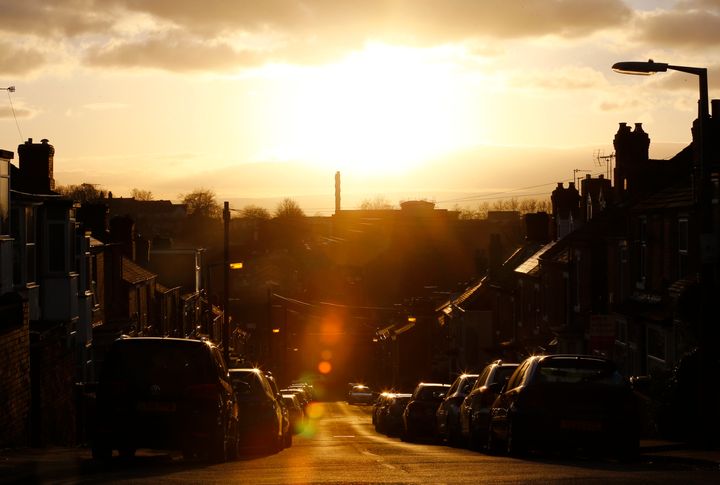
We are in the depths of the worst housing crisis since the Second World War, but there is a solution which has worked before and will work again – building council housing. Today, to push the issue back to the top of the Parliamentary agenda, we are relaunching the cross-party MPs’ Group on Council Housing.
This is a crucial time for housing policy.
Rough sleeping in the UK has almost trebled since 2010, with over 4,750 people estimated to have been sleeping on the streets in 2017. Hundreds of thousands more are sleeping in hostels, shelters, derelict buildings, or on sofas.
We have a whole generation of people who will never be able to afford their own homes – the Institute for Fiscal Studies recently found just one in four middle-income young adults own their own home, down from two in three 20 years ago.
This housing crisis has essentially been caused by severe undersupply of social housing over the past three decades.
It’s no coincidence that housebuilding rates reached their post-war peak during the 1950s and ’60s when successive governments were committed to both private-sector and public-sector house building. Housing was plentiful and house prices stayed low, so ordinary earners could afford to rent or buy their own homes.
Unfortunately, the drive for council housing was curtailed by the Thatcher Government, which starved investment and sold off stock through Right-to-Buy. Fourty percent of that stock is now in the hands of private landlords who, in some cases, are charging up to 50% more rent than is being charged for comparable local-authority-owned housing.
The success of the ’50s and ’60s, however, shows that prioritising council housing needn’t be a partisan issue. Harold Macmillan, the Conservative Prime Minister from 1957 to 1963, initiated some of the greatest council-house-building programmes, and cross-party working is a principle we are committed to in our MPs’ group.
So how can we get more council housing built?
There needs to be a commitment at the highest level of Government to prioritise building council homes, which is backed up by substantial funds.
“There needs to be a commitment at the highest level of Government to prioritise building council homes, which is backed up by substantial funds”
Theresa May’s announcement at the Conservative Party Conference last year of a £2billion investment in social homes was welcome, but in real terms this will only deliver an extra 25,000 homes by 2021. This compares to the £25.1billion spent on housing benefit in 2015/16, which is a direct result of not building the housing we need. And although Philip Hammond recently announced plans to build 300,000 homes a year, only 1.7% of the new homes built last year were earmarked for council housing.
Local-authority borrowing caps strangle councils’ ability to build the housing they want to provide. The Treasury Select Committee and the Local Government Association are among the voices demanding that the government lift the cap, allowing local authorities to borrow to invest in housing.
The other major issue is land. Sky-high land prices are preventing local authorities from being able to access the land to build on, and incentivising cash-strapped councils to sell off the land they do own rather than build on it.
One part of the solution could be to legislate for all unused local authority and public sector land to be used exclusively to build council homes. This would prevent local authorities from selling off land that could be better used for the public good and encourage, for example, the NHS to provide more key-worker housing.
But it is also vital to tackle the underlying issue of inflated land prices. Currently, land is priced at its potential future development value rather than its existing use value. This pushes up the cost of undeveloped land which would be suitable for housing development, making investment in council housing more expensive. Bizarrely, it also rewards landowners for housing and infrastructure developments to which they don’t contribute.
The homelessness charity Shelter has argued that a few small reforms to the 1961 Land Compensation Act and associated legislation on compulsory purchase orders would enable local authorities to purchase land at a fair market value - one that reflects both the current value of the land, reasonable compensation and allows for the delivery of high quality, affordable developments.
Greater compulsory purchase powers for councils could also allow them to take advantage of the 200,000 homes that currently lie empty across the country and bring them into the public sector.
Finally, Right-to-Buy policies need to be reformed or scrapped - in some cases, when houses are sold through Right-to-Buy 70% of the receipts goes back to the government rather than to the local authority. This means most council housing is never replaced when lost through Right-to-Buy.
These are the kind of reforms we will be discussing at the revived MPs’ Group on Council Housing and we hope that this will be the start of cross-party consensus on the need to enable councils to once again deliver the housing we so desperately need.
Matt Western is the Labour MP for Warwick and Leamington
David Drew is the Labour MP for Stroud